Solar Press: A hundred years of change - The Noel D'Cunha Sunday Column
From catering to British merchants in pre-Independence India to servicing the multinational brands today, Kanpur’s Solar Press (established as Star Press in 1904) has an enthralling history spanning more than a century.
Govind Bhargava of Solar Press tells PrintWeek in this Sunday Column.
24 Jul 2022 | By Ramu Ramanathan
Ramu Ramanathan: Star Press was started in 1904. What was the address of the press?
Govind Bhargava: Star Press was established by the late Ayodhya Prasad Bhargava (the great grandfather of the present generation) in a kothi called Swiss Cottage, 19/25, Ram Narain Bazaar, Kanpur.
RR: What was the size? How many employees? How many shifts?
GB: This two-storey building in the old downtown, purchased from a British gent, was about 400-sq yards. Initially, the press started with a Chandler & Price machine, one guillotine and a few composition cases. It had two-three workers, and it used to run for six days from 8 to 12 noon and 1 to 5 pm. Later, another British building of about 35,000-sqft, called Empire State Garages, was purchased.
RR: Any history of the first job? Most memorable job in the pre-Independence era?
GB: Star Press was a printer for the British and the private industries in the city. Examples of jobs printed at Star Press during the time include tent and dhurrie price list for the Elgin Mills Company, art catalogue of village industries for Alliance Advertising Association, and general catalogue for Empire Engineering, among others.
RR: What type of customers in those days?
GB: Kanpur was called the Manchester of East, as the city had many textile mills, sugar company offices, the leather industry and also engineering companies. Many Institutions such as IIT, the Agriculture College, HBTI were (and still are) our customers for their printing, and of stationery, registers, books, and more. The press also catered to the needs of product labels and tags of various companies.
RR: To jump many decades, who started Star Press?
GB: The founder was the late Ayodhya Prasad Bhargava (APB), who lost his father in the plague when he was only 16 years old. Suddenly, he had to shoulder his own and his two-year-old brother’s livelihood. APB had just finished his primary education when he started his journey as a printer.
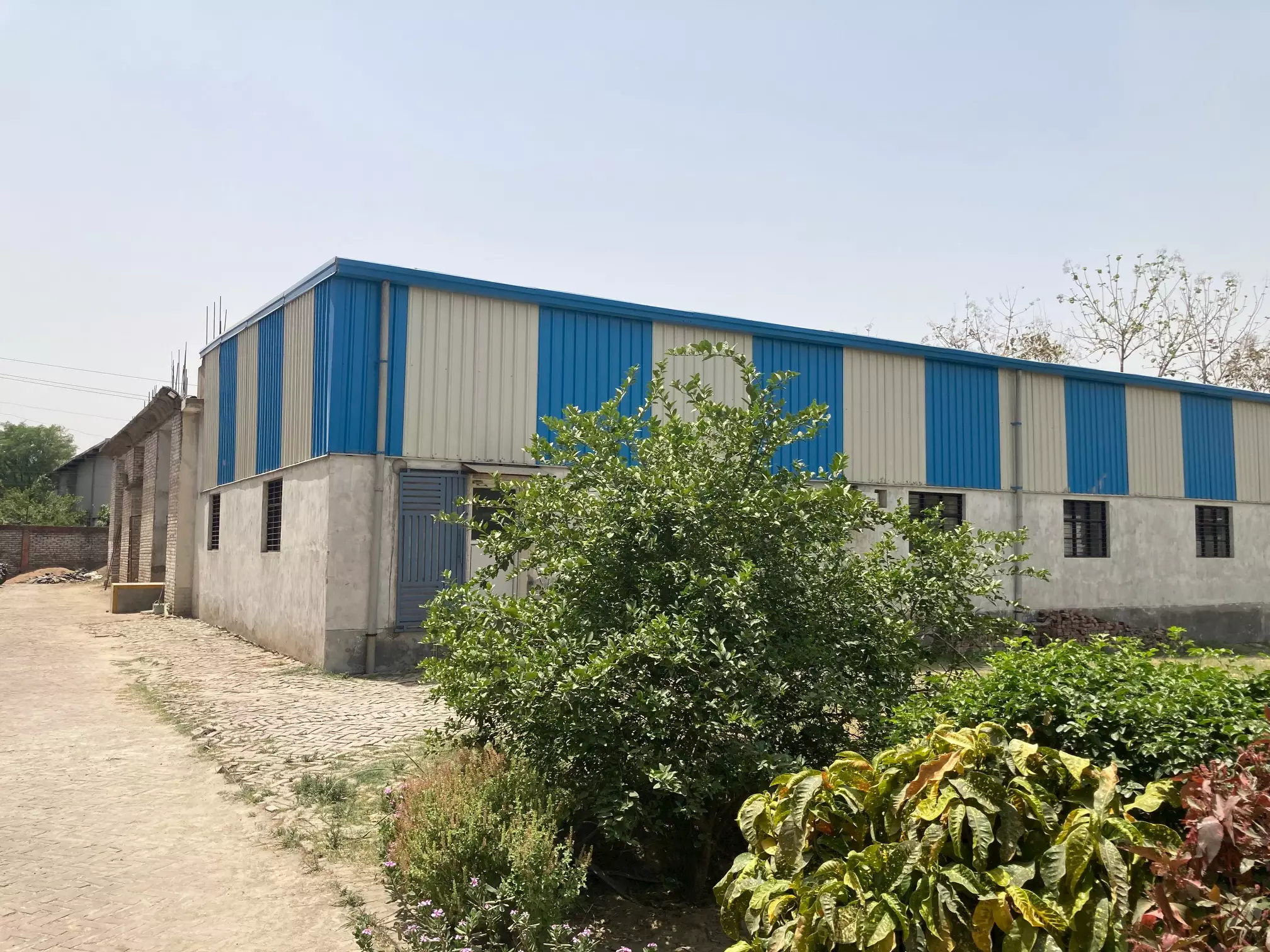
Solar Press: The new factory
RR: The Bhargavas are an important print family like the Dhotes and Sachdevs. What is the history of the Bhargavas?
GB: Bhargavas in different cities have different stories of printing background. Although they may be closely or distantly related, there’s not much of a business connection. It is also true that the late Nawal Kishore Bhargava was one of the pioneers in the printing industry in the country.
RR: Which kit did Star Press begin its journey with.
GB: A Chandler & Price treadle machine, a guillotine, a stitching machine and some composing cases were part of the kit to start with. In times to come and by the early 1940s, Star Press had Linotype, Intertype and Monotype composition casters, and numerous platen and cylinder machines. Printing machines from Germany were mostly part of the equipment.
Polygraph machines such as OM 1, OM 2, Mercedes, Victoria Front (swing cylinder), Western Germany Heidelberg cylinders, auto platens, and Dawson Payne & Elliot (SW2 & SW4) big cylinder machines had made the press one of the largest in North India. By the 1960s, it had already got its first set of offset machines, which included MAN, Planeta and Heidelberg Kordmachines. Polar & Krause guillotine machines along with a number of binding machines were used for finishing jobs with the help of skilled binders.
RR: Any kit which is intact?
GB: One Hopkinson & Cope hand press and one Payne & Sons guillotine and a treadle machine. Both are being preserved to be displayed at reception of the new premises.
RR: I will have to travel to Kanpur, soon.
GB: Yes, long overdue.
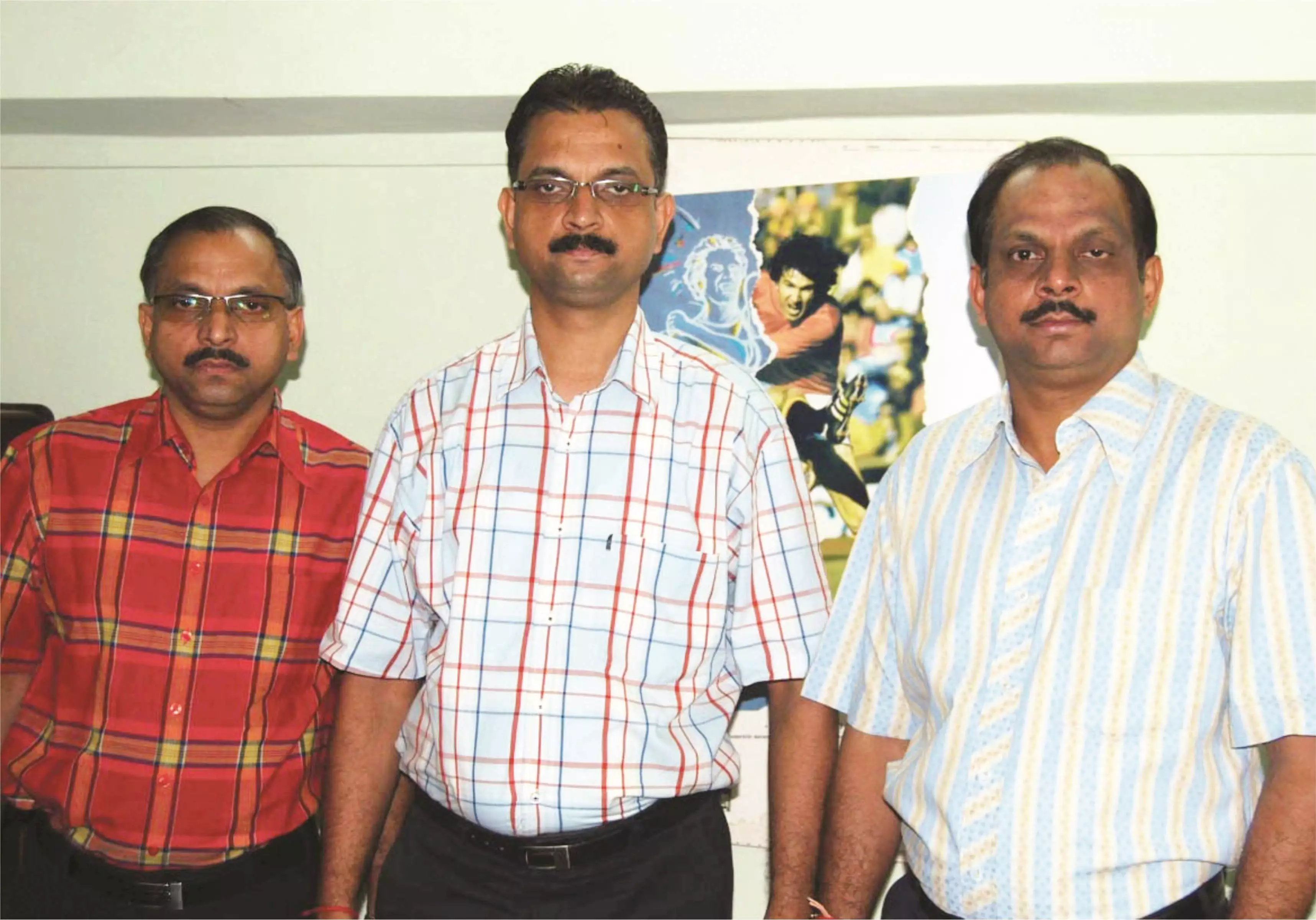
(l-r) Gopal Bhargava, Arvind Bhargava and Govid Bhargava
RR: How did you source paper and other consumables?
GB: The paper was sourced from Titaghur Paper Mills, Orient Papers, Sirpur and the mills from South India.
RR: After APB, who were the second generation?
GB: In the second generation, our grandfather, the late Kailash Nath Bhargava, took over the reins around mid-1920s. By then, APB had decided to migrate to Bengal, where he later started the Calcutta Phototype Company in Calcutta and also purchased British Companies such as W Newman & Co, James Glandye & Co at 6 Chowringhee. His second son, the late Prithvi Nath lived with him in Calcutta. That part of the family lives in Kolkata, Kanpur and has a large packaging unit specialising in mono cartons and liner cartons.
RR: Who were the third generation?
GB: The third generation, the sons of Kailash Nath Bhargava were late Om Prakash Bhargava, late Prem Prakash Bhargava and Aditya Prakash Bhargava. Today, most of the family members are in Kanpur, the US and Hyderabad in different professions. Nikita (Govind Bhargava’s daughter) is the fifth generation to have joined the family business.
Her experience in internal audit during her stint in KPMG for almost a year after graduation has helped mitigate internal risks and improve governance in cost, quality, efficiency and manpower utilisation. She is focussed mainly on sales and finance. Her plan is to further expand the business at both the national and international level.
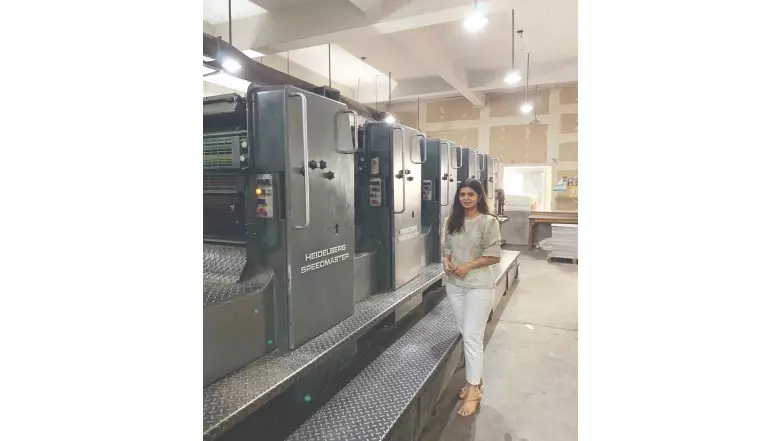
The fifth generation - Nikita Bhargava
RR: Star Press became Solar Press in 1992. Why the change in name?
GB: In 1990, when Kailash Nath Bhargava passed away, it was felt that the three brothers had separated. It was agreed that Om Prakash Bhargava and his sons would carry forward the printing business. The account settlements took time and the current partners were keen to diversify into packaging by disposing of the outdated machines and by investing in new machines.
To do so, it was important to take a bank loan. This prompted the change of name. The name change was supposed to be temporary, but once the business grew, there was no looking back as Solar Press had already established itself.
RR: Makes a lot of sense. Has the address remained the same?
GB: The address and factory licence number has remained to be the same: 96/2 The Mall, Chunniganj, Kanpur. The Star Press and Solar Press boasted of having PO Box No 1.
RR: That’s such wonderful print trivia.
GB: Yes, isn’t it?
RR: Now the focus at Solar Press is on mono cartons and the packaging segment. What type of client roster do you have?
GB: The clientele is a mixed basket. We manufacture hosiery boxes, spice boxes, pharma and incense sticks boxes. In the commercial segment, we also print balance sheets for the corporates, and the annual magazines of institutes such as IIT Kanpur, and so on.
RR: Which kit do you own now?
GB: Solar Press has a full-fledged designing department, with a Konica Minolta digital press, which serves as a proofing machine. We have a capacity of 10 printing units, of which the Heidelberg SM 102 six-colour + coater is our flagship machine. In post-press, we have an Alpna UV/IR set-up, lamination machines, a Heidelberg automatic and four manual die-cutting machines, including one with foil attachment. Two folder-gluers complete our kit arsenal.
RR: And what type of staff clout?
GB: In management and operations, we have one printing graduate and two diploma holders. Another five in sales and administration. Totally, 75 workers in total.
RR: Your factory has been busy during the Covid period. That’s what a little birdie tells me …
GB: Yes. We are doing constructions in our new premises in phases. During the Covid period, we completed the first phase of the construction, as there was an acute shortage of space. The next phase will give us another hall and office block. We also plan to completely shift to the new factory from our existing premises in the city. We would monetise the city space by renting it out.
RR: Prudent decision. What about kit?
GB: We added an Alpna UV kit in 2019, which was important as it replaced our UV outsourcing.
RR: Which are the cities in UP you service?
GB: We supply to Prayagraj, Faizabad (now Ayodhya), Maharajganj, Gorakhpur, Farukhabad, Lucknow, Gonda, Kannauj, Jhansi, Gaya (Bihar) and Datia (MP).
RR: Past 24 months have been tough. One lesson you have learnt from 2020-21?
GB: Keep the overheads low. The lower it is, the less you are vulnerable to succumb in adverse conditions. This is good advice for print business in general.
RR: How has the Covid pandemic impacted the business in your city?
GB: Commercial printing, which formed a big part of our business, was badly hit. Print work by various institutions was nil. Payments were badly affected. With rising raw material costs, incense sticks manufacturers have turned to flexible packaging, especially for the low-cost products.
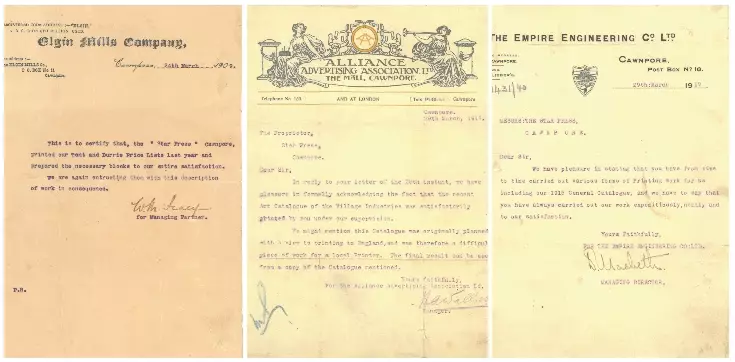
RR: Grim.
GB: Indeed.
RR: Mr Bhargava: You are a former president of the AIFMP (one of the largest print bodies in the world). What is the role AIFMP is playing in terms of representing the plight of print firms?
GB: There is nothing much the Federation can do as far as the price of raw materials is concerned. The prices are driven by various national and international factors. All through the pandemic, the AIFMP has been doing excellent work of hosting webinars to guide printers on different subjects.
Knowledge-sharing dialogues were conducted on these platforms. Game-changing techniques, cost-controls, safety, optimum use of technology were the regular subjects.
RR: How did you cope with the increase in cost of paper and other raw material/inputs?
GB: We have always kept our customers informed of our costing. Time to time, we have updated them with the increase in costs. If the customers are genuine business people, they understand the situation and agree to our requests. In some cases, customers have turned to our competitors and we wish them well.
RR: What are the challenges and opportunities for printers in your city in the post-Covid world?
GB: There are challenges due to price rise, exit of non-professional players; vanishing of commercial printing jobs have hit the print owners hard. On a positive note, earlier, a lot of customers had migrated to Delhi-NCR to fulfill their packaging needs. Now, there has been a reverse trend, and big customers are now opting to source material locally.
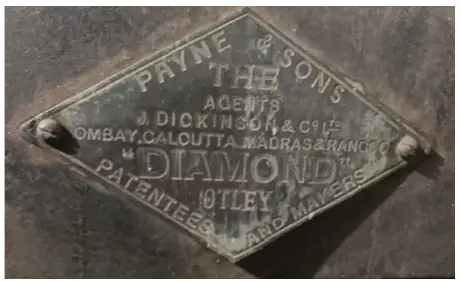
Label on guillotine
RR: What kind of change would you like to see in the world of print in your city?
GB: More educated printers, improved paper/board supplies, stability of prices of raw material, and shorter credit periods by buyers would help bear with the adverse business situations.
RR: What will be the effect on run lengths? Will shorter run lengths mean more digital print volumes?
GB: Kanpur is the manufacturing hub of UP. Digital printing is not part of the main business. I feel, shorter lengths are opted by customers due to expectations that the paperboard prices will fall. But this has not happened since the last one year.
RR: Any major changes, especially in the wedding photo album market, education vertical and jobber vertical across UP that you foresee?
GB: I am not really updated in those sectors as high-end buyers of digital printing source their requirement through middlemen from Delhi-NCR. But definitely, education and the jobber segments have been hit hard as volumes have drastically reduced due to cost factors. It appears that a lot of printing is being replaced by digital files. For example, some schools have opted for sharing annual magazines to students in PDF formats.
RR: Our industry has handled so many types of adversities in its print journey. One piece of advice as a 120-year-old print firm: since many print firms are finding it difficult to cope in these tough times...
GB: One has to be alert on all fronts. Be it: quality, service and cost. Also, less leveraged the business is on financials, the better the ability to combat tough times. Time to time counselling of management, sales and production teams is necessary.
RR: Kanpur is an important city in UP. Three things the state government needs to do to ensure that Kanpur becomes an important print hub.
GB: Unfortunately, for the last many decades, Kanpur has suffered due to different political parties in the centre and the state. This is not the case during the last five years. We have seen a lot of development. The much-ignored infrastructure development of the city was a big deterrent for new industries to invest here.
Hopefully, with the new airport terminal, more flights, metro work in full swing, the Industrial Development Authority coming up with more parks, it will boost development and industrialisation of the city.
RR: Where do you see Solar Press in the next 120 years?
GB: The past decade has been rough. With consolidation and the expected growth, we can plan some more units.

Payne & Sons guillotine and an antique hand-press
RR: Where?
GB: Lucknow, to start with.
RR: That’s interesting. In 1858, Nawal Kishore Bhargava founded the Nawal Kishore Press in Lucknow. He adopted modern technology and improved the marketing between the years 1865 and 1872. Did you know that?
GB: Yes, we hope to emulate him and our other forefathers.
Kanpur trivia by Govind Bhargava
Kanpur was founded in 1803.
Kanpur was founded as a camp of the British Army in the early 1800s. Slowly, it developed as an industrial town after venturing into leather shoes and textile industry for the Army. Many Marwari and Baniya families with links from Rajasthan and Kolkata also joined the British in establishing big industries — the Singhanias, Jaipurias, the Baglas and many others were big names by then.
Kanpur has been an important city for the British Empire. The Kanpur of those days was the fifth most industrial city, with Singhania’s JK organisation as the fourth largest group in the country. It had mills all around the city.
Railway lines criss-crossed the main city area, which used to carry coal and other material to and from the factories. Although the railway lines do not exist anymore, old mills and British-time bungalows can be seen all over the city area.


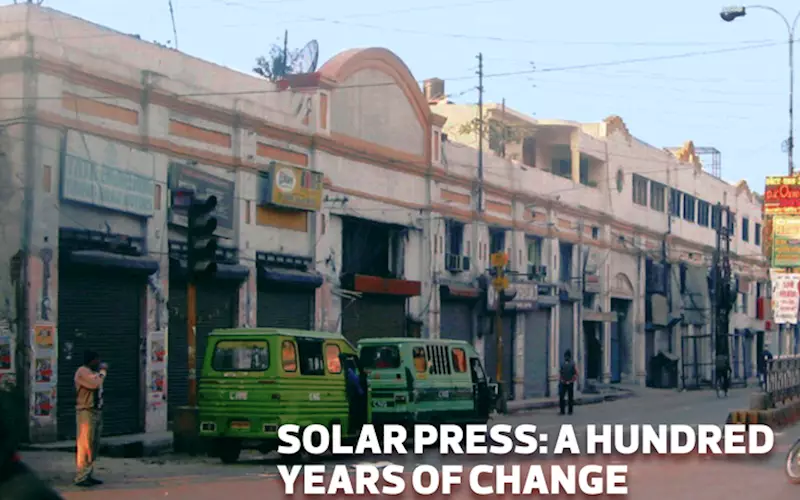








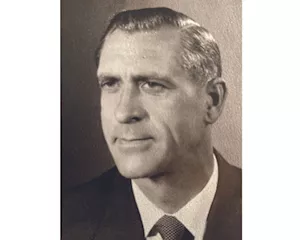
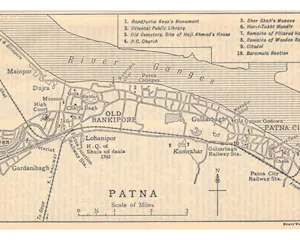

 See All
See All